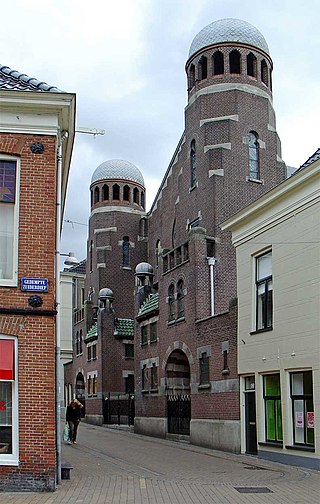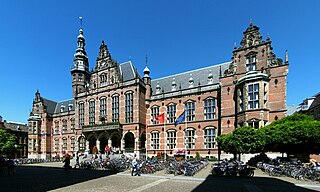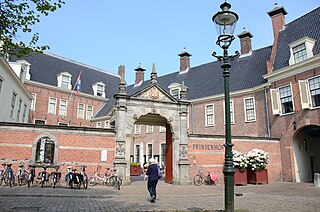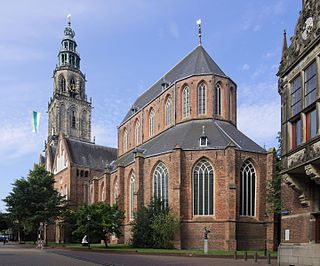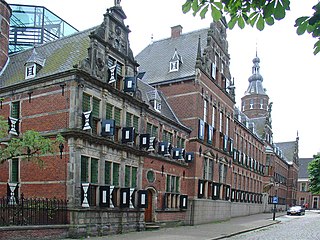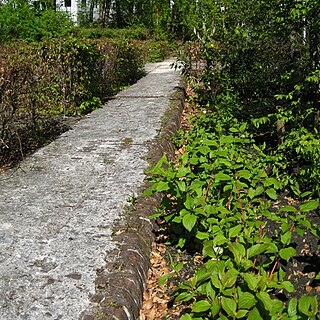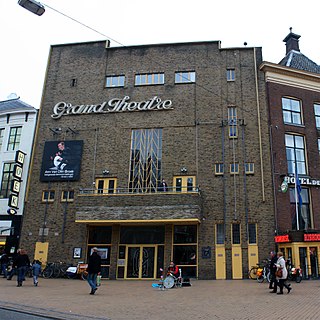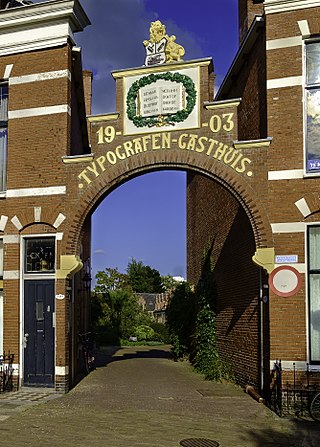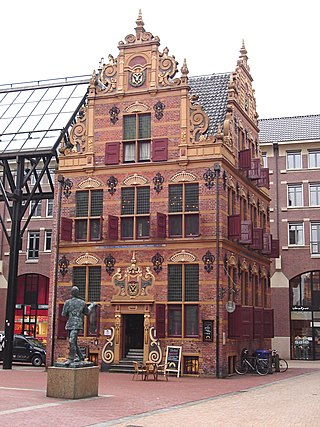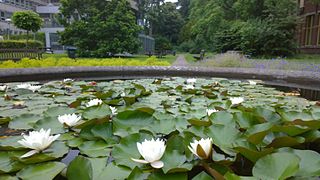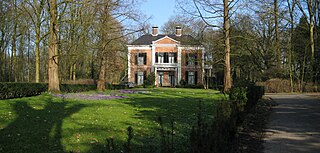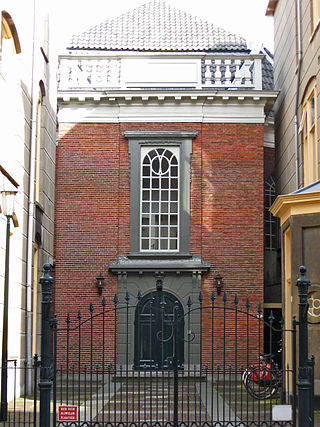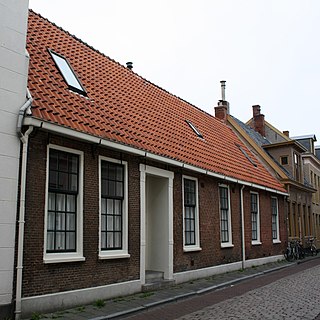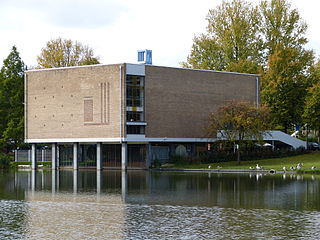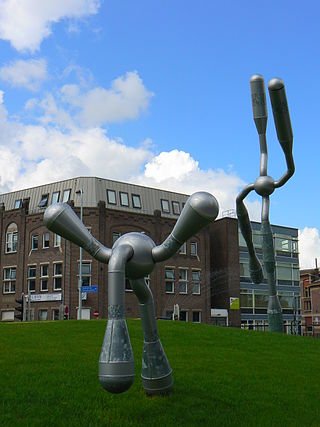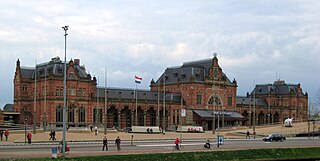22 Sights in Groningen, Netherlands (with Map and Images)
Legend
Welcome to your journey through the most beautiful sights in Groningen, Netherlands! Whether you want to discover the city's historical treasures or experience its modern highlights, you'll find everything your heart desires here. Be inspired by our selection and plan your unforgettable adventure in Groningen. Dive into the diversity of this fascinating city and discover everything it has to offer.
Sightseeing Tours in GroningenActivities in Groningen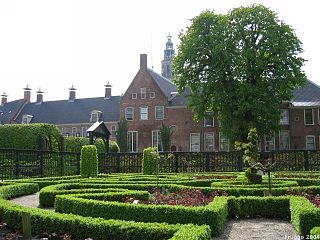
The Prinsentuin or, Prinsenhoftuin is a garden built in renaissance style that is located in Groningen, behind the Prinsenhof. This Garden consists of a rose garden, a herb garden, a part with berceaus and a sundial on the wall above the entrance.
2. Synagoge
The synagogue is a Jewish building built in 1906 at Folkingestraat 60 in the Dutch city of Groningen. It was in use from 1906 to 1942 and has been dedicated to worship again since 1981. However, the prayer room has been reduced in size, creating space for a museum part. In 2021, a permanent exhibition was opened in the synagogue in which visitors can learn about Jewish culture and religion and the history of the Jewish communities in the city and province of Groningen.
3. Academy Building
The Academy Building opposite the University Library on the Broerstraat in the city of Groningen from 1909 was built in the Northern Netherlands neo-Renaissance style. It is the main building of the University of Groningen. It is important because of its cultural-historical and architectural-historical value. It is also significant for the history of university education in Groningen and because of the quality of the spatial articulation, the ornamentation and the cohesion between exterior and interior.
4. Prinsenhof
The Prinsenhof is a building on the Martinikerkhof in the Dutch city of Groningen. The building consists of four wings, three of which are located within the associated walled Prinsentuin behind it. The oldest part is the former church of the Brothers of the Common Life from 1487. On the east side of the entrance is the Gardepoort, which is connected to the complex.
5. Martinikerk
The Martinikerk is the oldest church in Groningen, Netherlands. The church and its associated tower are named after Saint Martin of Tours (316–397), the patron saint of the Bishopric of Utrecht to which Groningen belonged.
6. Provinciehuis
The provincial government building of Groningen is the administrative center of the province of Groningen. The building complex is located on the east side of the Martinikerkhof in the heart of the city of Groningen. The front building on the Martinikerkhof dates from the beginning of the twentieth century, the rear, containing the state hall, is the former Latin Sint Maartensschool of Groningen and dates from the late Middle Ages.
7. Helperlinie
The Helpman Line was a line of defence south of the Kempkensberg, which was located below the city of Groningen. From that height, the artillery of Bernhard von Galen, the Bishop of Münster, had bombarded the fortified city in 1672. The line consisted of a series of bastions, redoubts and bulwarks with a 'dry' moat and a 'wet' horizon in front.
8. Grand Theatre
Grand Theatre is a flat-floor theatre on the Grote Markt in the city of Groningen. It was originally built as a cinema. After a period of vacancy, it was squatted in the night of 30 to 31 May 1980. Since then, the building has served as a theatre.
9. De Jonge Held
De Jonge Held is the polder mill of the former water board of the same name De Jonge Held at Friesestraatweg 436 northwest of the Dutch city of Groningen. The mill is part of the hamlet of Slaperstil, which is part of Leegkerk within the municipality of Groningen. The mill, in combination with the adjacent miller's house, forms a characteristic image when driving from the Aduard side towards the city of Groningen. The mill was owned by the Westerkwartier Mill Foundation for many years, the current owner is Stichting De Groninger Poldermolens.
10. Typografengasthuis
The Typografengasthuis is a courtyard on the Petrus Campersingel in the city of Groningen. It was built in 1903 by order of the Groninger Boekverkoopers College and was intended as an opportunity to invest the foundation's capital.
11. Goudkantoor
The Goudkantoor is a building built in 1635 and located on Waagstraat near the Grote Markt in Groningen, Netherlands. Originally it was built as an office for the receiver of the province of Groningen when it was called Collectehuis.
12. Praedinius Gymnasium
Praedinius Gymnasium is a gymnasium in Groningen, the Netherlands. It dates back to the fourteenth century and is the larger of two non-comprehensive gymnasia in Groningen, the other being Willem Lodewijk Gymnasium.
13. Hortustuin
The Oude Hortus is a publicly accessible courtyard garden in the Hortus neighbourhood in the city of Groningen. The garden was used for hundreds of years as the Hortus botanicus of the University of Groningen.
14. Protestantse gemeente Hoogkerk
The Olle Church is a church building from the thirteenth century on the Hoendiep (210) and the Kerkstraat in Hoogkerk in the province of Groningen. Originally, the church had a tower, but this was lost in 1514 in the battle between the city of Groningen and Saxony.
15. Pieternellagasthuis
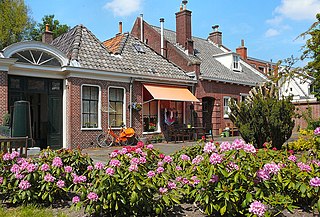
The Pieternellagasthuis is a guesthouse and courtyard in the city of Groningen. The guesthouse is located in the Grote Leliestraat in the Hortus neighborhood, a neighborhood in Groningen where many other guesthouses are also located.
16. Groenestein
The Groenestein House is an estate in the Helpman district, in the south of the city of Groningen. It was built in 1685 by Lucas Alting, a wealthy townsman. It was considerably expanded in 1871, losing its original form.
17. Doopsgezinde Kerk Groningen
The Mennonite church in Groningen is located in a side alley of the Oude Boteringestraat. Originally there was a wooden clandestine church here, hidden behind a house. The current church building was built after the Mennonites had received full equal rights during the French period. The church was consecrated on October 29, 1815.
18. Sint Martinusgasthuis
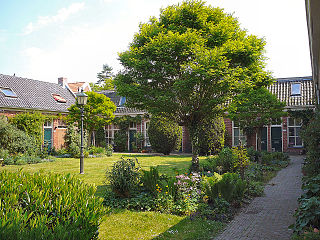
The Sint Martinusgasthuis is a courtyard and former guesthouse in the city of Groningen, which has been designated as a municipal monument. The Gasthuis is located in the Grote Leliestraat in the Hortusbuurt, the street with the most courtyards and guest houses of the city of Groningen.
19. Corneliagasthuis
The Cornelia Hospital was a small hospital in the city of Groningen. It was founded in 1854 by the Catholic Cremers family. The hospital is named after Cornelia J. Tellegen-Cremers and was therefore also referred to as Tellegengasthuis.
20. Kandelaarskerk
The Kandelaarkerk is a former church on the Hamburgerstraat in the Dutch city of Groningen. The building was built on behalf of the Reformed Churches Liberated and was designed by the architects Pit van Loo and Sikke van der Mei. The liberated left for the Oosterkerk in 1999. After the building was briefly used by an Antillean denomination, it was sold in 2000. It has been used as a daycare center ever since. The building is a municipal monument.
21. Xy
Xy is a sculpture by Martin Borchert and stands on the grounds of the University Medical Center Groningen (UMCG) in the city of Groningen and is owned by the University of Groningen (RUG). The artwork is made of galvanized steel, which is then coated (again) – creating a kind of flowers in the zinc work – and then lacquered. Martin Borchert's work is part of the art project Knowledge Years 1994-2014. It is located at the corner of Antonius Deusinglaan and Oostersingel in a lawn next to the building of the Faculty of Medical Sciences.
22. Hoofdstation
Groningen railway station, known locally as the Main Station, is the main railway station in the city of Groningen. It is located on the south side of the city center, just across the Verbindingskanaal.
Share
Disclaimer Please be aware of your surroundings and do not enter private property. We are not liable for any damages that occur during the tours.
